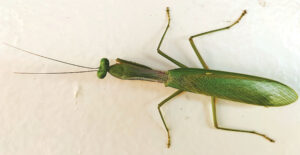PHOTOGRAPHY BY VINCENT LAO AND ALVIN LAO
Resurgence is about wonderful creatures making appearances due to the decreased human activity during the COVID pandemic. They are animals whom I regularly encountered during my younger years.
As the years passed, they are getting harder and harder to find. But due to the lockdowns of the pandemic, I have witnessed their resurgence in a wooded area where I temporarily resided for almost a year (at my brother’s house). I discussed mostly invertebrates, about how abundant they have become in this part of Puerto Princesa City.
Surely, this abundance of prey will not go unnoticed by predators.
LIVING ON A PRAYER
Let’s start with the “smaller” ones. While they are the most abundant predators here, most of us are already familiar with the Butiki — the House Lizard or common Gecko. So, I will not discuss more about them.
There are a lot of Praying Mantises here, and yes, they are actually fearsome predators. They come in different sizes and colors. I am sure there are a lot of Mantises in other parts of the country, but the ones here grow really big. Three- inch specimens are considered small.
KEEPING ME ON MY TOES
Mantises aside, let me introduce you to a heftier insect predator, the Toe-Biter. I managed to catch one some years ago, on a swampy property not far from my brother’s house. At about five inches long, excluding the ovipositor (tail, snorkel, or whatever you want to call it), this really is a behemoth of the Insect world.

They are actually water Insects and usually prey on other Insects who fall into the water.
I interviewed my father about them. He said these used to be quite abundant, especially on inundated grasslands or rice fields. While walking on these wetlands, they have to watch their step. Accidentally stepping on a Toe-Biter while barefoot will result in a very unpleasant experience: they will — no surprise here — bite your toes.
Come to think of it, it is rather strange why I did not see any Toe-Biter growing up, especially since I go to fields and wooded areas many times each month. One possible explanation I can think of is that during the 1980s and 1990s, sustainable farming was not a well-known concept, and farmers relied heavily on chemical pesticides. That probably killed off the Toe-Biters and hundreds of other behemoth Insects.

Some titos and manongs told me that given this hefty size, drowning Insects alone cannot satisfy the Toe-Biter’s appetite; they are known to tackle small Frogs and Fishes. I did not believe this at first. Insects are supposed to be afraid of Frogs and Fishes, right?
But my disbelief led to a tragic loss. I placed a Toe-biter in my aquarium with my freshwater Purple Crab named Violet. These Crabs are pretty little ones we can catch in pristine rivers deep in the forest. The next day, I found Violet upside down and in the clinches of the Toe-Biter’s claws. For the safety of my other animal companions, I had to release Miss Crab Eater back to her swamp.
Sadly, that meant I lost two companions that day.









